Dell PowerEdge 2600 Handleiding
Bekijk gratis de handleiding van Dell PowerEdge 2600 (61 pagina’s), behorend tot de categorie Server. Deze gids werd als nuttig beoordeeld door 70 mensen en kreeg gemiddeld 4.4 sterren uit 35.5 reviews. Heb je een vraag over Dell PowerEdge 2600 of wil je andere gebruikers van dit product iets vragen? Stel een vraag
Pagina 1/61

Dell™PowerEdge™2600SystemsServiceManual
System Overview
Basic Troubleshooting
Indicators, Codes, and Messages
Removing and Replacing Parts
Jumpers and Connectors
Using the System Setup Program
Notes, Notices, and Cautions
Information in this document is subject to change without notice.
©2002-2004DellInc.Allrightsreserved.
Reproduction in any manner whatsoever without the written permission of Dell Inc. is strictly forbidden.
Trademarks used in this text: Dell, the DELL logo, PowerEdge, and Dell OpenManage are trademarks of Dell Inc. Intel is a registered trademark and Xeon is a
trademark of Intel Corporation; Microsoft, , MS-DOS Windows, and Windows NT are registered trademarks of Microsoft Corporation; Novell and NetWare are
registered trademarks of Novell, Inc.
Other trademarks and trade names may be used in this document to refer to either the entities claiming the marks and names or their products. Dell Inc. disclaims any
proprietary interest in trademarks and trade names other than its own.
Initial release: 19 Aug 2002
Last revised: 22 Jul 2004
NOTE: A NOTE indicates important information that helps you make better use of your computer.
NOTICE: A NOTICE indicates either potential damage to hardware or loss of data and tells you how to avoid the problem.
CAUTION: A CAUTION indicates a potential for property damage, personal injury, or death.

Back to Contents Page
Basic Troubleshooting
Dell™PowerEdge™2600SystemsServiceManual
Initial User Contact
External Visual Inspection
Observing the Boot Routine
Internal Visual Inspection
Running the System Diagnostics
Using the System Diagnostics
Using the Device Groups Menu
Device Groups Menu Options
Error Messages
The basic troubleshooting procedures can help you diagnose a system problem. These procedures can often reveal the source of a problem or indicate the
correct starting point for servicing the system. See your Installation and Troubleshooting Guide for more detailed instructions for troubleshooting your system.
A brief explanation of how to load and start the system diagnostics can be found in "Running the System Diagnostics."
Perform the following procedures in the order presented.
Initial User Contact
When you first contact a user who has a problem, ask the user to describe the problem and the conditions under which it occurs. After the user describes the
problem, perform the following steps:
1. Ask the user to back up any data on the hard drive if the system's condition permits. See the documentation provided with the operating system or
applications software for information about backing up data.
2. Ask the user to try to duplicate the problem by repeating the operations he or she was performing at the time the problem occurred.
Can the user duplicate the problem?
Yes. Proceed to step 3.
No. Proceed to the next section, "External Visual Inspection."
3. Observe the user to determine if he or she is making an error, such as typing an incorrect key combination or entering a command incorrectly.
Is the problem a result of user error?
Yes. Instruct the user in the proper procedure or direct the user to the appropriate user documentation for the correct procedure.
No. Proceed to "External Visual Inspection."
External Visual Inspection
Improperly set switches and controls and loose or improperly connected cables are the most likely source of problems for the system, monitor, or other
peripherals (such as a keyboard, mouse, or other external equipment). A quick check of all the switches, controls, and cable connections can easily solve these
problems.
To perform the external visual inspection, perform the following steps:
1. Inspect the status indicators that can signify component malfunction.
2. Turn off the system, the monitor (if attached), and all peripherals.
3. Verify that all power cables are properly connected to the system, the monitor and peripherals, and their power sources.
4. Inspect connections to any attached devices including network cables, keyboard, monitor, mouse (if used), or keyboard/video/mouse (KVM) switch (if
used), as well as any devices attached to the serial port.
5. Inspect all external monitor controls for any obvious damage or improper settings (if used). For proper settings of the video monitor controls, see the
documentation for the monitor.
6. Inspect the keyboard (if used) to ensure that no keys are sticking. If keys are sticking, it may be necessary to replace the keyboard.
7. -Inspect the exterior of the system, including all controls and indicators, and all user accessible data storage devices for any signs of physical damage.
Does the inspection reveal any problems?
Yes. Proceed to the appropriate procedure in "Removing and Replacing Parts."
NOTE: While your system can be run headless (without a keyboard. mouse, and monitor), some of the following diagnostic procedures will require that
you have a keyboard, mouse, and monitor connected to your system.

No. Proceed to "Observing the Boot Routine."
Observing the Boot Routine
After you have performed an external visual inspection, boot the system and, while the boot routine is running, observe the system for any indications of
problems.
To observe problem indications during the boot routine, perform the following steps:
1. If the system is off, turn on all peripherals and the system.
2. Check the power-supply indicators.
Is the red fault indicator lit?
Yes. Troubleshoot the system power supply (see your Installation and Troubleshooting Guide).
No. Proceed to step 3.
3. -Watch the <Num Lock>, <Caps Lock>, and <Scroll Lock> indicators on the upper right corner of the keyboard. After all three indicators flash
momentarily, and following a long pause (approximately 30 seconds), the <Num Lock> indicator should light up and remain on (unless the Num Lock
option is set to off in the System Setup Program).
Do these indicators flash on and off within approximately 10 seconds after the boot routine starts?
Yes. Proceed to step 4.
No. Replace the keyboard with a known working keyboard. If the problem persist, troubleshoot the system power supply. If the troubleshooting
procedure indicates that the system power supply is operational, troubleshoot the memory and look for displayed codes on the 5 LEDs on the system
board (see "System Board LED Codes").
4. During the boot routine, observe the system for any of the following indications:
l Beep codes — A beep code is a series of beeps that indicates an error condition. See "System Beep Codes."
l System error messages — These messages can indicate problems or provide status information. If a system error message appears, see "System
Messages."
l System board LED codes — These indicators display a series of 5 lit or flashing LEDs, and can only be observed when the system cover is removed
(see "System Board LED Codes").
l Diskette-drive and hard drive access indicators — These indicators light up in response to data being transferred to or from the drives. If either if
these indicators fails to light up during the boot routine, troubleshoot the diskette drive or hard drive subsystem, as appropriate.
5. Insert a copy of the diagnostics diskette into the diskette drive, and reboot the system.
Does the Diagnostics menu appear?
Yes. See "Running the System Diagnostics."
No. Proceed to "Internal Visual Inspection."
Internal Visual Inspection
A simple visual inspection of a system's interior hardware can often lead to the source of a problem, such as a loose expansion card, cable connector, or
mounting screw. When you perform the visual inspection, see "Jumpers and Connectors" to locate components referenced in the inspection procedure.
1. Remove the bezel (see "Removing the Bezel").
2. Turn off the system, including any attached peripherals, and disconnect all the power cables from electrical outlets.
3. Remove the cover (see "Removing the Cover").
CAUTION: The power supplies in this system produce high voltages and energy hazards, which can cause bodily harm. Only trained service
technicians are authorized to remove the system cover and access any of the components inside the system. See the System Information Guide
for complete information about safety precautions, working inside the computer, and protecting against electrostatic discharge.
NOTE: Most of the steps in this procedure require observation of system functions and indications, some of which can occur simultaneously. It may be
necessary to reboot the system several times to complete all of these steps.
NOTE: You can run the system diagnostics from a set of diskettes you create by downloading the system diagnostics from the Dell Support website at
support.dell.com.
NOTICE: Before you proceed with the internal visual inspection described in this section, ensure that the user has saved all open files and exited all
open application programs, if possible.
CAUTION: Only trained service technicians are authorized to remove the system cover and access any of the components inside the system. See
your System Information Guide for complete information about safety precautions, working inside the computer, and protecting against
electrostatic discharge.
Product specificaties
| Merk: | Dell |
| Categorie: | Server |
| Model: | PowerEdge 2600 |
Heb je hulp nodig?
Als je hulp nodig hebt met Dell PowerEdge 2600 stel dan hieronder een vraag en andere gebruikers zullen je antwoorden
Handleiding Server Dell
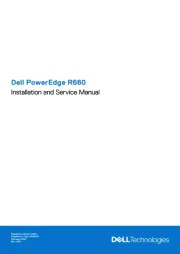
10 Maart 2025

19 Februari 2025
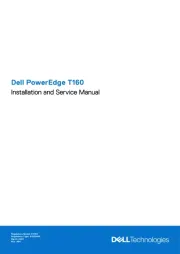
4 Februari 2025
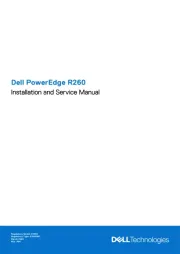
4 Februari 2025

3 December 2024

3 December 2024

3 December 2024

3 December 2024

12 Augustus 2023

12 Augustus 2023
Handleiding Server
- StarTech.com
- QNAP
- Allnet
- Acti
- AVerMedia
- Mobotix
- Asus
- Raritan
- Areca
- Technics
- GeoVision
- Atlona
- LaCie
- Tripp Lite
- Flir
Nieuwste handleidingen voor Server
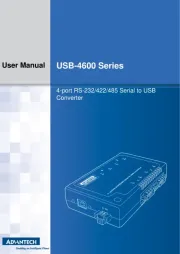
30 Juli 2025
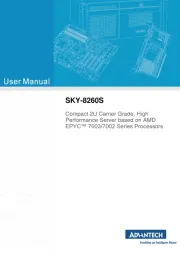
30 Juli 2025
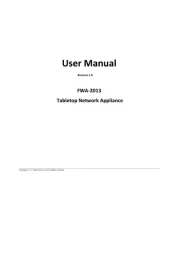
29 Juli 2025
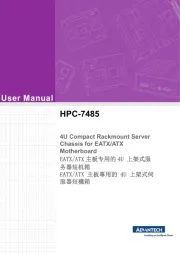
29 Juli 2025
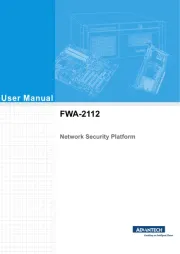
29 Juli 2025
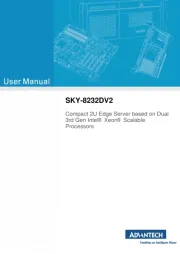
29 Juli 2025
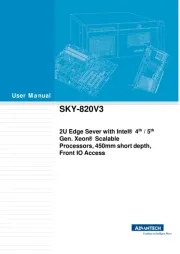
29 Juli 2025
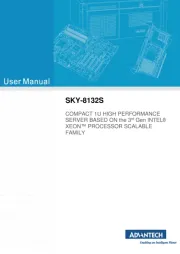
29 Juli 2025
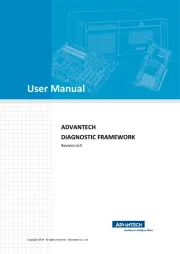
29 Juli 2025
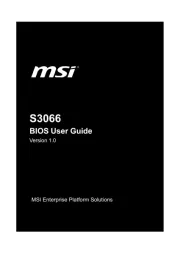
29 Juli 2025